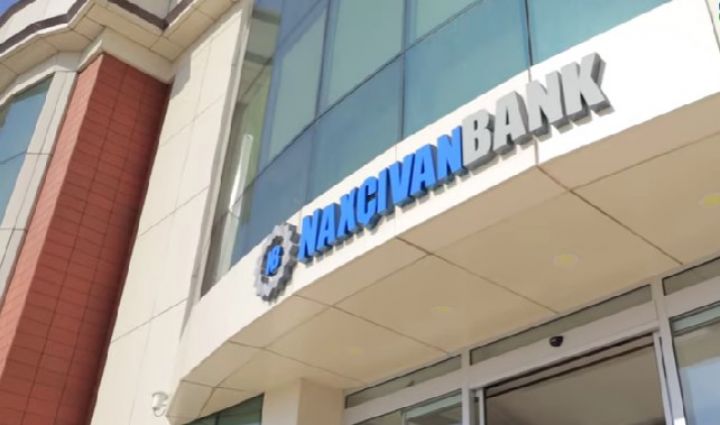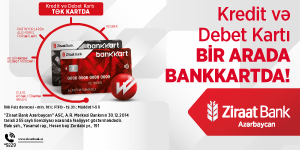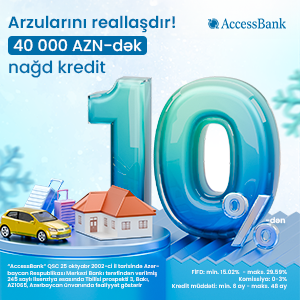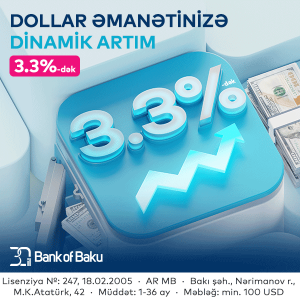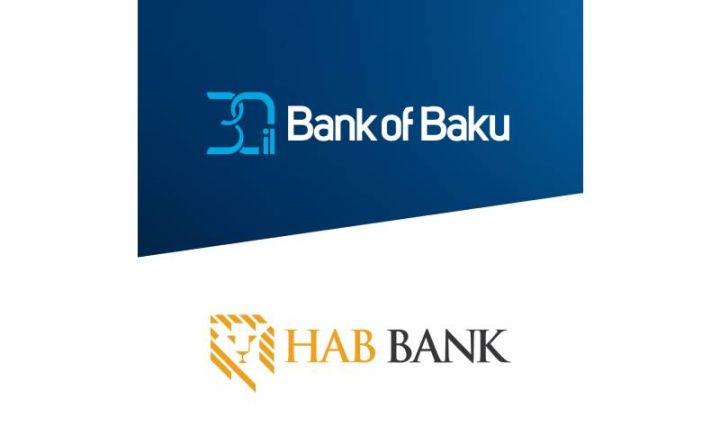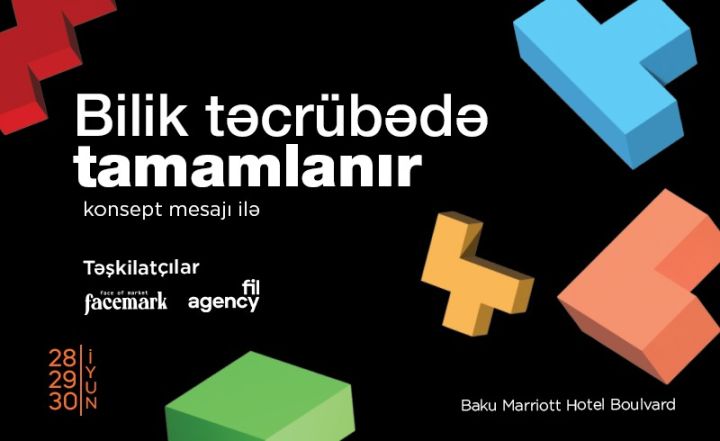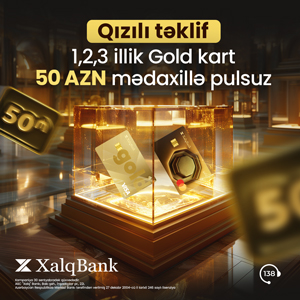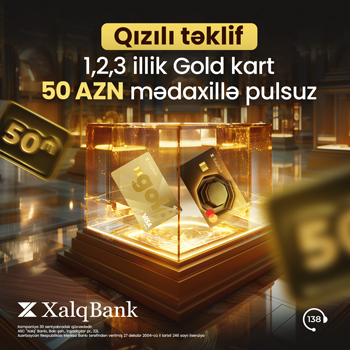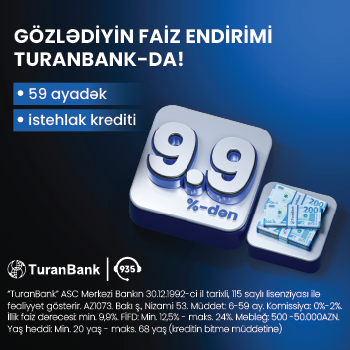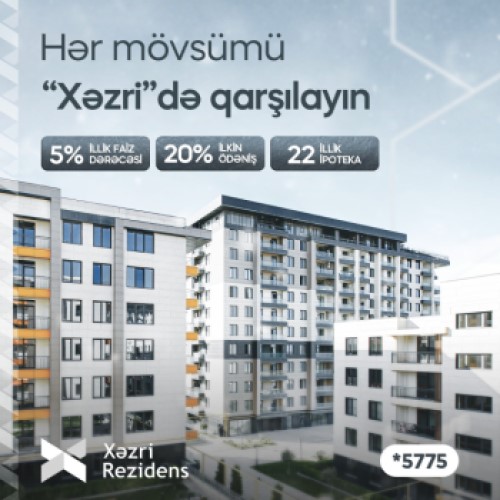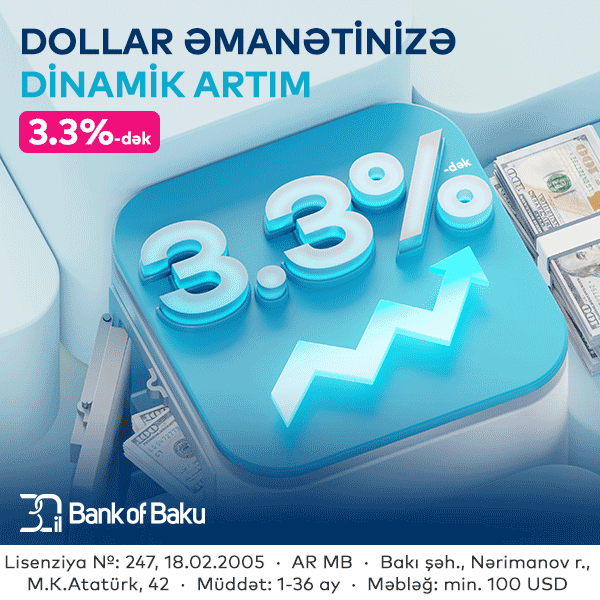Beynəlxalq Bankdan "Aqrarkredit"ə 300 milyon da ötürüləcək
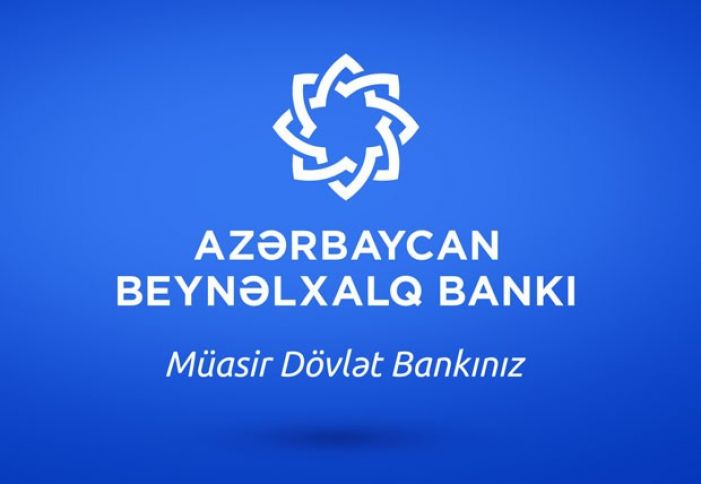
2017-ci ilin dördüncü rübdə Azərbaycan Beynəlxalq Bankı (ABB) ümumi dəyəri 300 mln. manat olan toksik aktivi "Aqrarkredit" QSC-yə ötürəcək.
Bu barədə "Fitch" beynəlxalq reytinq agentliyinin açıqlamasında deyilir.
Reytinq agentliyi bildirir ki, son 12 ay ərzində ABB-nin aktivlərinin keyfiyyəti xeyli yaxşılaşıb. Təbii ki, bunun səbəbi toksik aktivlərin ötürülməsidir. Sentyabrın sonuna bankın kredit portfeli 1,8 mlrd. manatadək azalıb ki, bu da ümumi aktivlərin 24%-inə bərabərdir. "Fitch" bildirir ki, dördüncü rübdə ABB ümumi dəyəri 300 mln. manat olan toksik aktivi "Aqrarkredit" QSC-yə ötürəcək.
"Fitch" ekspertləri bəyan edir ki, bankın mənfəəti (o cümlədən xarici öhdəliklərin restrukturizasiyası və toksik aktivlərin ötürülməsindən əldə olunan mənfəət) ikinci dərəcəli kapital hesab olunur. Bankın ilkin hesabatına əsasən, 2017-ci ilin sentyabrın sonuna "Fitch" birinci dərəcəli kapitalın adekvatlıq əmsalının 11% səviyyəsində olduğunu qeyd edir. Bununla yanaşı, mütəxəssislər hesab edir ki, cari ilin sonuncu rübündə toksik aktivlərin ötürülməsi nəticəsində mənfəətin korreksiyası bu göstəricinin 30%-dək artmasına səbəb olacaq.
"Fitch" iddia edir ki, ABB-nin kapitalı hələ də həssas olaraq qalır. Buna səbəb dövlət bankının 3,6 mlrd. manat məbləğində xarici valyutada hecləşdirilməmiş qısa mövqeyinin olmasıdır: "Bankın rəhbərliyi növbəti aylar ərzində valyuta mövqeyini bağlamaq niyyətindədir. Belə ki, rəhbərlik Maliyyə Nazirliyi ilə hecləşdirmə haqqında razılaşma əldə etmək və ya Mərkəzi Bankda yerləşdirilmiş manat depozitlərinin dollara konvertasiya olunmasını istəyir. Lakin bu tranzaksiyaların harada və hansı şəraitdə həyata keçirilməsi barədə qeyri-müəyyənlik mövcuddur".
Hazırda dövlət bankı Mərkəzi Bankda 2,9 mlrd. manat həcmində depozit yerləşdirib ki, bu da ümumi aktivlərin 38%-inə bərabərdir. Ümumi aktivlərin 21%-i və ya 1,6 mlrd. manat isə yüksək rentabelliyə malik olan xarici bankların hesablarında yerləşdirilib.
"ABB-nin likvidliyi güclənib ki, bu da bank üçün əlavə "təhlükəsizlik yastığı" deməkdir", - deyə məlumatda vurğulanıb.
Xəbər verdiyimiz kimi, 21 noyabr 2017-сi il tarixində Fitch Beynəlxalq Reytinq Agentliyi Azərbaycan Beynəlxalq Bankının reytinqlərinə yenidən baxıb. Agentlik, Bankın xarici valyutada uzunmüddətli reytinqini 4 pillə qaldıraraq "B-" səviyyəsinə, qısamüddətli reytinqini isə 5 pillə qaldıraraq "stabil" proqnozla "B" səviyyəsinə yüksəldib.
Fitch Upgrades International Bank of Azerbaijan to 'B-'; Outlook Stable
Fitch Ratings has upgraded Open Joint-Stock Company International Bank of Azerbaijan's (IBA) Long-Term Issuer-Default Rating to 'B-' from 'RD' (Restricted Default). The agency has also upgraded IBA's Viability Rating (VR) to 'ccc' from 'f'. A full list of rating actions is at the end of this commentary.
KEY RATING DRIVERS
IDRS, VR AND SENIOR DEBT
The upgrades of the bank's ratings follow the completion of IBA's debt restructuring on 1 September 2017 and the latest transfer of bad assets off the bank's balance sheet, which Fitch expects to be completed shortly.
IBA's VR of 'ccc' reflects the bank's still large exposure to market risks given the bank's sizable unhedged short foreign-currency position. However, the bank's VR benefits from a comfortable liquidity position and currently low-risk asset exposures.
The one-notch uplift of IBA's Long-Term IDR of 'B-' relative to the VR of 'ccc' reflects Fitch's view that the probability of the bank defaulting on its senior third-party obligations (which are reference liabilities for bank IDRs) is somewhat lower than it failing (i.e. becoming non-viable, and requiring external support to address a material capital shortfall). This view is supported by the bank's sizable liquidity cushion, the potential for regulatory forbearance from the Central Bank of Azerbaijan (CBA) and the possibility that, in the near term, some form of solvency support may be available from the authorities or quasi-sovereign entities.
Fitch has assessed the bank's post-restructuring credit profile based on prudential accounts at end-9M17, preliminary consolidated financial statements according to IFRS at the same date and management representations.
At end-9M17, IBA didn't comply with regulatory capital requirements because current year profits, which include most of the gains from the debt restructuring and bad assets transfer, are recognised as Tier 2 capital until the end of the year, and also investments in subsidiary banks are deducted from total capital. Adjusting capital ratios for current year results and assuming that the bad asset transfers are completed in 4Q17, Fitch estimates that end-2017 Tier 1 capital ratio could be close to 20%.
Based on the preliminary IFRS accounts, Fitch estimates IBA's Fitch Core Capital (FCC) ratio at around 11% at end-9M17. However, IFRS equity in these accounts (AZN392 million) is understated by around AZN300 million (management's estimation), as the new USD1 billion Eurobond, issued in exchange for the bank's restructured obligations, has not yet been restated at fair value based on its low (3.5%) coupon. Recognising this gain would improve the FCC ratio by an additional 9 ppts. Adjusting also for the 4Q17 gains on the bad loans transfers could result in a FCC ratio of up to a high 30%.
However, Fitch still views the bank's capital position as vulnerable due to the large unhedged short foreign-currency position of AZN3.6 billion (9x Tier 1 regulatory capital adjusted for current year profit and gains on the loan sales). Management intends to close the currency position during the next few months via a hedging arrangement with Ministry of Finance and/or conversion of its manat deposits with the CBA into US dollars. However, in Fitch's view there is uncertainty about where these transactions will take place and the terms of any hedges.
IBA's asset quality has significantly improved during the last 12 months due to the further transfers of bad assets. According to regulatory accounts, the bank's net loan book has contracted to AZN1.8 billion at end-9M17 (24% of total assets), of which around AZN300 million is to be transferred in 4Q17. Remaining loans are of adequate quality, comprising primarily exposures to retail customers and state-owned corporates. Other assets are mainly represented by low-risk local currency deposits placed with CBA (AZN2.9 billion, 38% of total assets at end-9M17) and current accounts with highly rated foreign banks (a further AZN1.6 billion equivalent, 21%).
At end-9M17, IBA's liquidity position was comfortable, with liquid assets (mainly, cash and cash equivalents and placements with CBA and foreign banks) covering over 100% of customer accounts. Foreign currency liquidity is also comfortable given a sizable share of liquid assets placed in foreign banks, and the long-term nature of most wholesale funding.
As a result of the debt restructuring, the bank has issued a new USD1 billion Eurobond, which is held mostly by the State Oil Fund of Azerbaijan Republic, Fitch understands from management. The issue is rated long-term 'B-', in line with the bank's Long-Term IDR, reflecting Fitch's view of average recovery prospects, in case of default.
SUPPORT RATING AND SUPPORT RATING FLOOR
The affirmation of the Support Rating of' 5' and Support Rating Floor of 'No Floor' reflects Fitch's view that support from the shareholder, the Azerbaijan sovereign (BB+/Negative), cannot be relied upon in the long term following the bank's recent default. However, in Fitch's view some form of forbearance or support may be made available to the bank in the near term to avoid a repeat default on third-party senior obligations, should its capital be depleted by losses resulting from its FX position.
RATING SENSITIVITIES
IBA's VR could be upgraded if the bank is able to hedge its open foreign currency position and if the hedge is viewed by Fitch as effective and reliable. Conversely, if the bank fails to close its currency position and incurs losses as a result of manat depreciation against the US dollar, then the VR may be downgraded, potentially to 'f' to reflect a material capital shortfall.
IBA's Long-Term IDR will probably become aligned with the bank's VR if the latter is upgraded. If the VR is downgraded then the Long-Term IDR will likely be affirmed at 'B-', unless Fitch believes there is a real possibility of losses being imposed on third-party senior creditor to restore the bank's solvency.
Positive rating action on the bank's Support Rating and Support Rating Floor is unlikely in the near term given the bank's recent default.
The rating actions are as follows:
Open Joint Stock Company International Bank of Azerbaijan
Long-Term IDR: upgraded to 'B-' from 'RD', Outlook Stable
Short-Term IDR: upgraded to 'B' from 'RD'
Viability Rating: upgraded to 'ccc' from 'f'
Support Rating: affirmed at '5'
Support Rating Floor: affirmed at 'No Floor'
Senior unsecured debt: assigned at 'B-'; Recovery Rating 'RR4'
Müştərilərin xəbərləri
SON XƏBƏRLƏR
- 3 gün sonra
-
2 d. əvvəl
“Qazprom” və İranın şirkəti Rusiyadan İrana qaz nəqlinin təşkili ilə bağlı razılığa gəliblər.
- 11 d. əvvəl
-
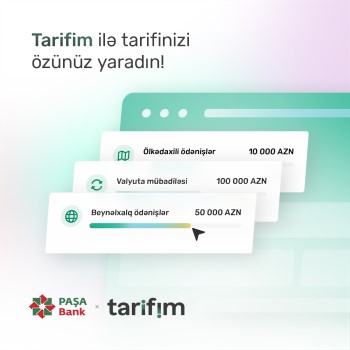
- 2 saat əvvəl
- 3 saat əvvəl
- 3 saat əvvəl
-
3 saat əvvəl
İlham Əliyevə “Leonardo” şirkətinin istehsalı olan təyyarə təqdim edildi
-
6 saat əvvəl
Dövlət qrumlarının tenderlərini udan şirkət 11 milyon gəlirdən 183 min mənfəət götürüb
-
6 saat əvvəl
87 milyon gəliri olan şirkət 2,4 milyon manat xalis mənfəət açıqladı
- 6 saat əvvəl
-
7 saat əvvəl
30 yaşlı Azərbaycan şirkətinin xalis mənfəəti 2 dəfəyə yaxın artıb - 3,6 MİLYON QAZANC
-
7 saat əvvəl
"Bu kolleclərdə oxumaq üçün artıq 1000-dən çox müraciət var"
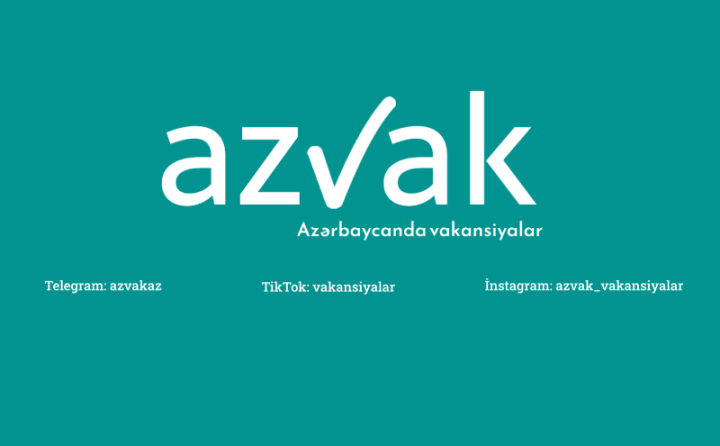
AzVak-da paylaşılan iş elanlarına 10 minlərlə baxış olur

“Qazprom” və İranın şirkəti Rusiyadan İrana qaz nəqlinin təşkili ilə bağlı razılığa gəliblər.
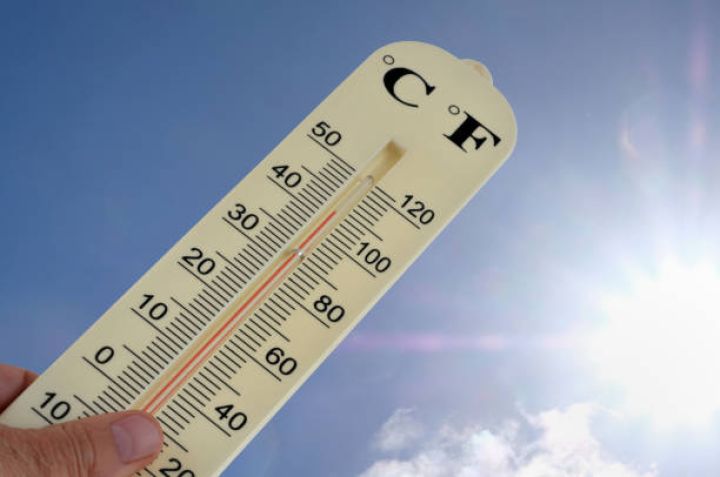
Sabahın hava proqnozu
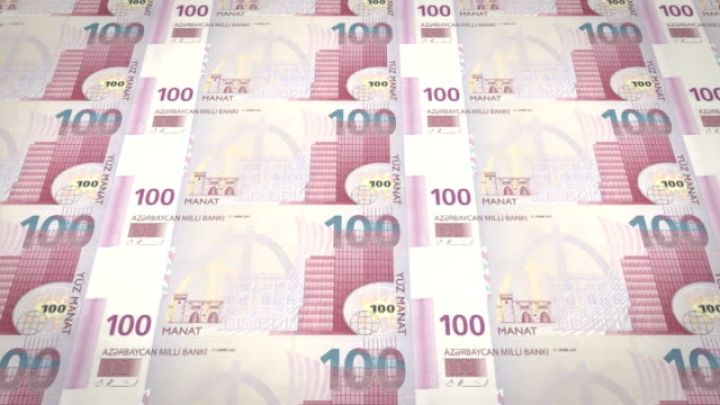
Dövlət büdcəsinə gömrük daxilolmaları azalıb
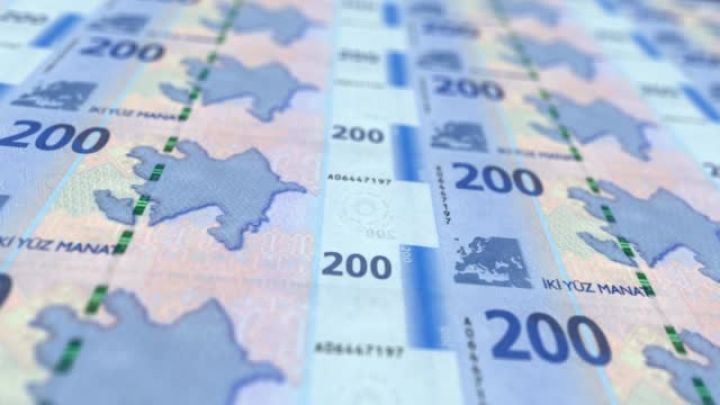
87 milyon gəliri olan şirkət 2,4 milyon manat xalis mənfəət açıqladı

"Məmmədoğulları" şirkəti gəlirini və mənfəətini açıqladı
Ən çox oxunanlar
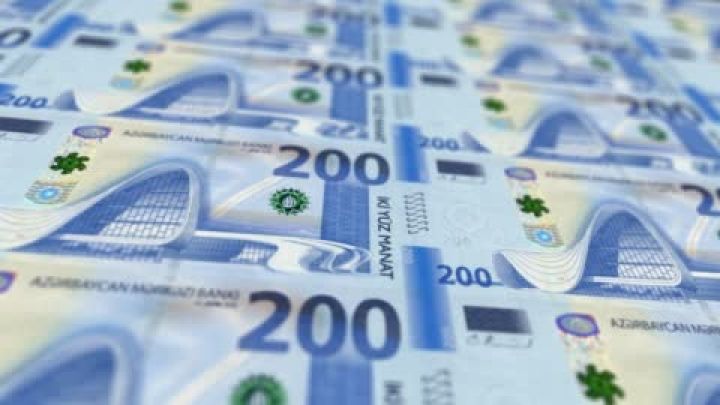
30 yaşlı Azərbaycan şirkətinin xalis mənfəəti 2 dəfəyə yaxın artıb - 3,6 MİLYON QAZANC
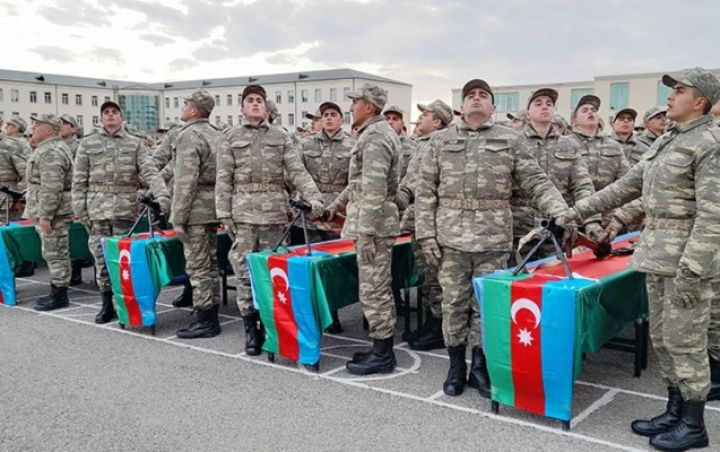
"Bu kolleclərdə oxumaq üçün artıq 1000-dən çox müraciət var"

"Bizim imkanımız var ki, öz tələbatımızı azı 70 faiz təmin edək"

"Dəyəri milyardlarla dollardır"

SOCAR Almaniyanın aparıcı enerji şirkətilə anlaşdı

Azad olunmuş ərazilərə avtobus reyslərinə iyul ayı üçün biletlər satışa çıxarılacaq
